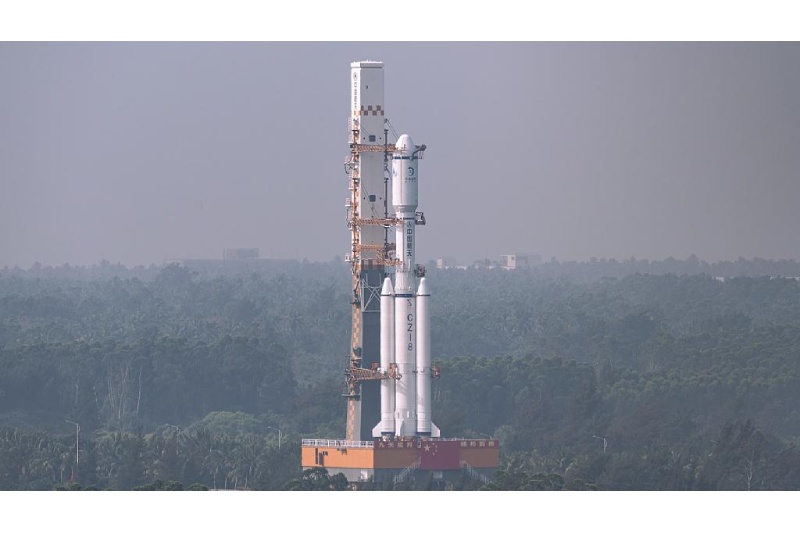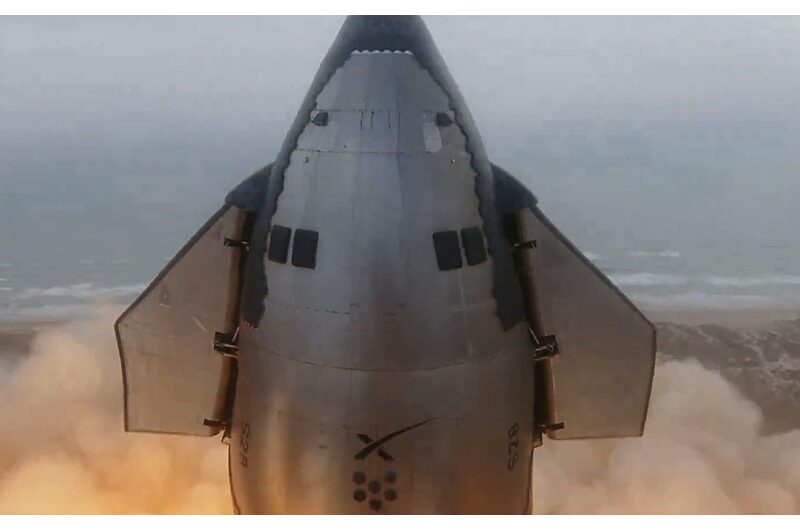Late on March 19, China is scheduled to launch its Queqiao-2 communications relay satellite in support of future lunar missions.
Early on March 17, a Long March 8 rocket was vertically moved to a launch pad at the Wenchang Satellite Launch Center. Launched toward the moon by the rocket, Queqiao-2 will be ready for the Chang’e-6 lunar far side sample return mission in May.
Queqiao-2 weighs 1,200 kg and has a 4.2-meter parabolic antenna installed. It will be able to stay in contact with Earth and the far side of the moon, which is never facing Earth, thanks to its eccentric orbit.
The satellite will be in operation for more than eight years. It is designed to support not just the Chang’e-6 expedition to the lunar south pole, but also the subsequent Chang’e-7 and Chang’e-8 missions as well.
Airspace closure alerts indicate two launch windows, while the Chinese government has not publicly disclosed a time or date for the launch. They are from 8:21 to 8:47 and from 9:45 to 10:16 p.m. Eastern Time, March 19 (UTC, March 20, 0145-0216 and 0021-0047).
Queqiao-2 is designed to land on a frozen, very elliptical lunar orbit with a 55-degree tilt. While above the northern hemisphere, the satellite will make its closest approach to the moon at a height of about 300 kilometers. After that, it will travel 8,600 kilometers to the apolune, or farthest point from the moon.
Since the moon and Earth are tidally locked, one half of the lunar body is always facing Earth. For a significant chunk of its orbit, Queqiao will be in direct sight of Earth and Chang’e-6, which is targeting Apollo Crater in the far side’s southern hemisphere.
In order to connect with the Chang’e spacecraft, Queqiao-2 will use UHF and X bands; to interact with Earth, it will use S and Ka channels. It has software that can be reconfigured and several data speeds.
In 2020, China launched Chang’e-5, its first mission to return samples from the moon. During a difficult 23-day, four-spacecraft trip, 1,731 grams of nearside lunar material were brought to Earth for that mission.
With Queqiao-2’s assistance, Chang’e-6 will also try to collect up to 2,000 grams of material, but this time from the far side of the moon. Investigation of materials from the far side may shed light on the differences between the two halves of the moon. Additionally, it might provide hints about the past of the Earth-moon system.
In 2018, Queqiao-2, also known as “Magpie Bridge-2,” was introduced as a more competent version of Queqiao. The Chang’e-4 mission—the first-ever lunar far side landing—was made possible by that satellite. The first relay satellite is old but still functional, orbiting the Earth-moon Lagrange point L2 in a halo. It is located approximately 70,000 kilometers away from the moon.
In addition, Queqiao-2 has payloads related to the Chang’e-7 mission’s science goals for 2026. These are an Earth-moon length baseline very long baseline interferometry (VLBI) experiment, an array neutral atom imager, and an extreme ultraviolet camera.
The tiny, experimental satellites Tiandu-1 and Tiandu-2 will also be launched. These will perform navigation and communications technology verification tests while flying in formation in lunar orbit. Satellite-to-ground laser ranging as well as intersatellite microwave ranging techniques will be tested.
Design guidance for China’s intended Queqiao lunar navigation and communication constellation is the aim of the Tiandu satellites.
Queqiao-2 was launched after two satellites that were supposed to reach lunar far retrograde orbit appeared to have vanished. Using a Long March 2C rocket, the DRO-A/B satellites were launched from the Xichang spaceport. It is currently believed that a malfunction in the YZ-1S upper stage of the mission left the satellites in low Earth orbit.
The Long March 8 rocket, measuring 50.3 meters in length, will only be launched one more. It made its maiden flight in 2020 and then, in early 2022, broke the national record for the most satellites launched in a single launch.
The Long March 8 combines a 3-meter-diameter liquid hydrogen-liquid oxygen second stage from the previous Long March 3A series with a 3.35-meter-diameter kerosene-liquid oxygen first stage from the newer Long March 7 series. In the upcoming months, an updated rocket is scheduled to make its debut flight from a new, commercial launch site close to Wenchang spaceport.
Topics #China #Queqiao-2 Lunar Satellite #Rocket










